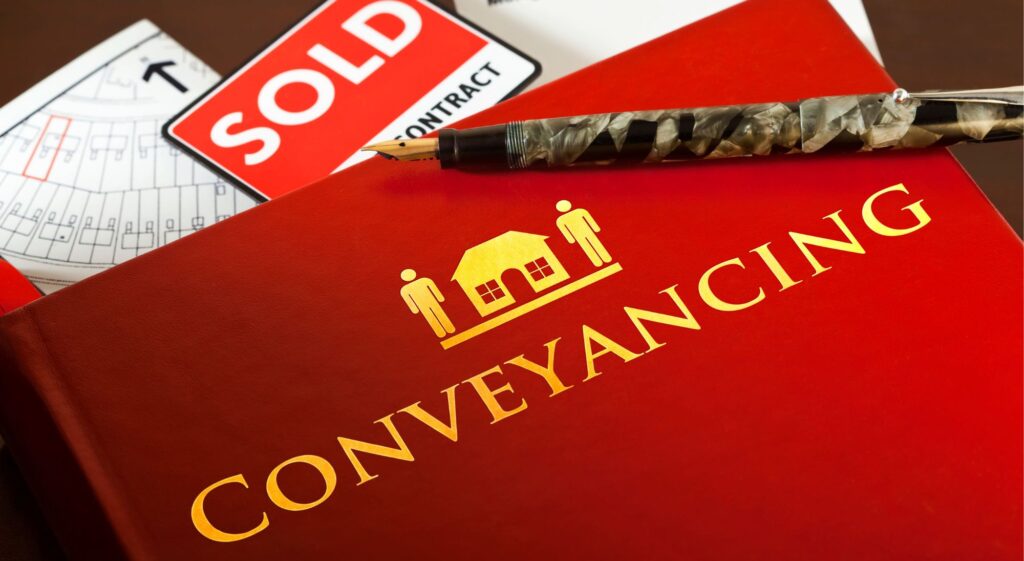Buying a home is an exciting milestone in anyone’s life. However, it can also be a complex and overwhelming process, particularly when it comes to conveyancing. In this step-by-step guide, we will take you through the ins and outs of the conveyancing process, helping you navigate each stage with confidence.
Understanding the Basics of Conveyancing
Before delving into the details, it’s essential to grasp the fundamentals of conveyancing Newcastle. So, what exactly is conveyancing? In simple terms, it is the legal process of transferring the ownership of a property from the seller to the buyer. This includes a range of tasks, from conducting property searches to ensuring all legal requirements are met throughout the transaction.
Now you may be wondering, why is conveyancing important? Well, one of the primary reasons is that it provides legal protection for both buyers and sellers. It helps guarantee that the property is legitimately owned, all obligations and restrictions are disclosed, and any potential issues are addressed before the transaction is finalized.
Furthermore, conveyancing plays a crucial role in ensuring that the property being sold is free from any legal disputes or claims. This process involves examining various legal documents, such as the title deed, to confirm that the seller has the legal right to transfer ownership. Additionally, conveyancers also investigate any potential planning or zoning issues that may affect the property.

Moreover, conveyancing involves the preparation and review of contracts to ensure that all terms and conditions are fair and legally binding for both parties. This meticulous attention to detail helps prevent misunderstandings and disputes down the line, providing a smooth and secure transaction for all involved.
The Role of a Conveyancer in Home Buying
A crucial player in the conveyancing process is a conveyancer. They are qualified professionals who specialize in property law and play a pivotal role in ensuring a smooth home buying experience. But what are their duties and responsibilities?
First and foremost, a conveyancer is responsible for preparing and reviewing legal documents, such as contracts of sale and mortgage agreements. They will thoroughly examine these documents, ensuring they are accurate and protect your interests as a buyer.
Choosing the right conveyancer is vital for a successful transaction. Look for someone with extensive experience, a solid reputation, and excellent communication skills. A skilled conveyancer will guide you through the process, provide expert advice, and keep you updated on every step.
Moreover, a conveyancer plays a crucial role in conducting property searches. These searches involve investigating various aspects of the property, such as checking for any outstanding liens, easements, or zoning restrictions that may affect the purchase. By conducting thorough searches, the conveyancer helps ensure that you are fully informed about the property you are buying.
Additionally, a conveyancer is responsible for facilitating the transfer of funds during the settlement process. They will coordinate with all parties involved, such as banks and solicitors, to ensure that the funds are transferred securely and on time. This step is essential in finalizing the purchase of the property and transferring ownership to the buyer.

The Conveyancing Process Explained
Now that you understand the basics let’s dive into the different stages of the conveyancing process, providing you with a comprehensive overview.
But before we delve deeper, let’s take a moment to appreciate the intricate dance that takes place behind the scenes of a property transaction. Imagine a symphony, with your conveyancer as the conductor, guiding you through each stage, ensuring harmony and precision.
Pre-Contract Stage
The pre-contract stage is where the magic begins. Your conveyancer, armed with their expertise and a keen eye for detail, embarks on a journey of discovery. They meticulously sift through mountains of paperwork, conducting various searches to uncover hidden gems of information.
These searches are like treasure hunts, unearthing valuable insights about the property you’re interested in. They delve into the property’s history, examining its title, exploring local authority planning records, and even peering into environmental reports. It’s like peeling back the layers of a story, revealing any potential plot twists that might affect the property’s value or your ownership rights.
But that’s not all. During this stage, your conveyancer also takes on the role of a negotiator, armed with a pen and a keen sense of fairness. They review the contract of sale, scrutinizing every clause, and negotiate any necessary amendments on your behalf. It’s like a delicate dance, ensuring that your interests are protected and that you fully understand the terms before signing on the dotted line.
Post-Contract Stage
Once the contract is signed by both parties, the curtain rises on the post-contract stage. This is where the conveyancing process truly comes alive, with your conveyancer taking center stage as the master coordinator.
With the precision of a maestro, your conveyancer orchestrates a symphony of due diligence. They gather the necessary documents, reaching out to various parties involved in the transaction, such as mortgage lenders and sellers’ conveyancers. It’s like conducting an ensemble, ensuring that every instrument plays its part harmoniously.
But the performance doesn’t stop there. Your conveyancer also arranges property surveys and valuations, bringing in experts to assess the property’s condition and value. It’s like a critical review, ensuring that there are no hidden issues waiting to surprise you and that you have a clear understanding of what you’re getting into.
Post-Completion Stage
After the final crescendo of the property purchase, the curtain falls on the post-completion stage. This is where your conveyancer takes their final bow, ensuring a smooth transition of ownership.
With meticulous attention to detail, your conveyancer ensures that the property is registered in your name with the relevant authorities. It’s like adding your name to the cast list, making your ownership official and recognized.
But the show isn’t over yet. Your conveyancer also handles the transfer of funds to the seller, ensuring that the financial aspect of the transaction is seamlessly executed. They become the conductor of your financial symphony, ensuring that every note is played perfectly.
And as the final act, your conveyancer offers guidance on the next steps. They may advise you to update your address with utility providers, ensuring a smooth transition of services. They may also recommend registering for property insurance, protecting your investment. It’s like the closing credits, tying up loose ends and ensuring a satisfying conclusion.
Common Challenges in the Conveyancing Process
While conveyancing is generally a smooth process, challenges can arise along the way. It’s important to be aware of these potential obstacles and know how to address them effectively.
One common challenge in the conveyancing process is the discovery of unexpected property issues. These can range from structural problems like subsidence or damp, to title defects that may affect the property’s ownership. When such issues are uncovered, your conveyancer plays a crucial role in advising you on the best course of action, which may involve seeking specialist opinions or renegotiating the terms of the sale.
Dealing with Legal Issues
Legal issues, such as boundary disputes or unresolved planning permissions, can complicate the conveyancing process. If such issues arise, your conveyancer will help you navigate through them, providing professional advice and, if necessary, engaging in negotiations or mediation.
Addressing Property Disputes
Property disputes can arise between buyers, sellers, or even with neighbors. These disputes may involve disagreements about boundaries, access rights, or shared amenities. Your conveyancer can assist in resolving these disputes by conducting thorough investigations and, if needed, working with relevant third parties, such as surveyors or solicitors.
Another challenge that can occur during conveyancing is the delay in the chain. A property chain is formed when multiple buyers and sellers are linked together because each transaction is dependent on the other. If one party in the chain faces an issue, such as difficulty securing a mortgage or unexpected delays in their own conveyancing process, it can have a domino effect on the entire chain. In such situations, effective communication and negotiation between all parties involved, facilitated by skilled conveyancers, are essential to prevent the chain from collapsing.

Tips for a Smooth Conveyancing Process
While the conveyancing process can be complex, following these tips will help you navigate it with ease:
Preparing Your Documents
One of the most effective ways to ensure a smooth conveyancing process is to organize your documents in advance. This includes gathering proof of identity, financial records, and necessary property-related documents such as planning permissions or warranties. Providing all the required information promptly to your conveyancer will help keep the process on track.
Additionally, it’s worth mentioning that having your documents in order can also expedite the process of obtaining a mortgage offer. Lenders often require thorough documentation to assess your financial situation and determine the level of risk involved. By having all the necessary documents readily available, you can streamline this part of the process and potentially speed up the overall conveyancing timeline.
Communicating Effectively with Your Conveyancer
Effective communication is key to a successful conveyancing experience. Always keep the channels of communication open with your conveyancer, promptly respond to their requests for information, and address any concerns or questions you may have. Clear and open communication will help avoid misunderstandings and ensure a smooth progression throughout the process.
In addition to regular communication, it can be beneficial to establish a preferred method of communication with your conveyancer. Whether it’s via email, phone calls, or in-person meetings, having a designated mode of communication can help streamline the exchange of information and ensure that important details are not missed or overlooked.
Understanding the Costs Involved
Lastly, it’s important to be aware of the costs associated with conveyancing. Your conveyancer will provide you with a detailed breakdown of all the fees, including legal fees, taxes, and search costs. Understanding the costs involved will help you plan your budget and avoid any unexpected surprises.
Furthermore, it’s worth noting that while conveyancing fees are an essential part of the process, they are not fixed and can vary depending on factors such as the complexity of the transaction and the expertise of the conveyancer. It’s always a good idea to obtain multiple quotes from different conveyancers to ensure you are getting a fair and competitive price for the services provided.
In conclusion, navigating the conveyancing process can feel overwhelming at first, but with the right knowledge and guidance, it can be a smooth and rewarding experience. By understanding the basics, working with a qualified conveyancer, and following our helpful tips, you’ll be well-equipped to embark on your journey towards homeownership with confidence.

